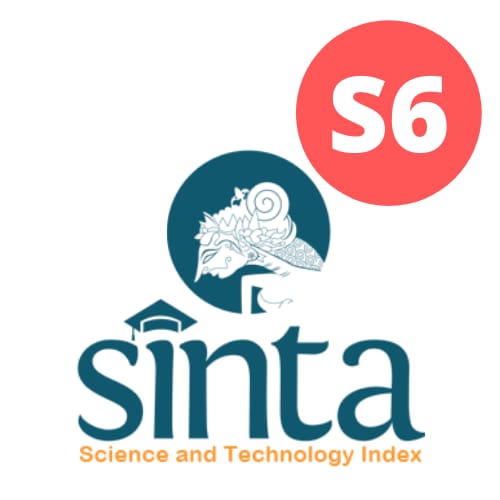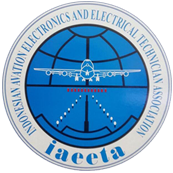DESIGNING OF OPEN CHANNELS AND CLOSED CHANNELS FOR DRAINAGE FACILITIES IN AIRSIDE
DOI:
https://doi.org/10.52989/jaet.v3i2.104Keywords:
Airport, channels, drainage, designing, facilityAbstract
Drainage facilities are one part of the airside facilities that are important to ensure the safety of the airside area when weather changes occur. This study aims to make drainage that can be carried out to ensure the safety of the airside area from stagnant water. The calculation of airside drainage refers to the planned drainage calculation rules so that the drainage channels can design accordingly so as not to interfere with the operation of other facilities. In the design of drainage work, the material requirements for making open and closed channels at Dewadaru Karimun Jawa Airport must be precisely designed so that the work takes place by the specified planning and quality standards. The research uses a mixed methodology that the exploratory study by conducting a literature study that compares observation. The analysis starts by finding the volume for each work item based on Standar Nasional Indonesia (SNI) 2052-2017, a national iron and concrete standard. The result shows the excavation of soil for making channels, the total volume required is 880.24 m3, the importance of sand is 40.76 m3, the book of substantial rebates of a mixture ratio of 1: 2: 3 is 23.82 m3, and the book of K300 Concrete works for U-Ditch type C channels (100 x 100) is 116.29 m3. For the needs of the required iron volume of 16,415.09 kg, formwork of 1,408.45 m2, stone river masonry size 100 x 100 by 139 m3, stone river masonry size 50x50 amounted to 42.05 m3, and the volume of plastering work of the channel amounted to 192.46 m2. The conclusion of this study is the accuracy of design required to calculate each work item's volume.
Downloads
References
Almahera, D., Lukman, A., & Harahap, R. (2020). Evaluasi Sistem Drainase Area Sisi Udara (Air Side) Bandar Udara Internasional Kualanamu Deli Serdang. Buletin Utama Teknik, 15(2), 152–158. Retrieved from https://jurnal.uisu.ac.id/index.php/but/article/view/2321
Anugrah, A. D., Asta, A., & Handayani, R. (2018). Studi Laju Sedimentasi menggunakan HEC-RAS 4.1.0 pada Drainase Bandar Udara Juwata Tarakan. Prosiding Seminar Nasional Teknologi, Inovasi Dan Aplikasi Di Lingkungan Tropis, 1(1).
Badan Standarisasi Nasional Indonesia. (2017). 11011_SNI 2052-2017_BAJA TULANGAN BETON.pdf. Retrieved from https://docs.google.com/viewer?a=v&pid=sites&srcid=ZGVmYXVsdGRvbWFpbnxzdHJ1a3R1cmJldG9uMXxneDo3OGNiMmM4NDk0ZDg0MDgw
Direktorat Jenderal Perhubungan Udara. SKEP/77/VI/2005. , (2005).
Djaelani, M., & Sinambela, E. A. (2021). Analisis Rancangan Perencanaan Biaya dengan Metode Perhitungan Biaya Nyata Pada Pelaksanaan Proyek Perumahan Sederhana. Journal.Fkpt.Org, 2(2). Retrieved from https://journal.fkpt.org/index.php/jtear/article/view/229
Falah, R. E. (2019). Analisis Biaya Pekerjaan Drainase Berdasarkan Metode Konvensional Dengan Metode Pracetak U-Ditch (Analysis Of The Cost Of Carrying Out Drainage Work Based On Conventional Methods With Precast Methods). Retrieved from https://dspace.uii.ac.id/handle/123456789/15993
Jifa, N. A., Susanaati, D. L., Tunggul, A., & Haji, S. (2019). Evaluasi Saluran Drainase di Jalan Gajayana dan Jalan Sumbersari Kota Malang. Jurnal Sumberdaya Alam Dan Lingkungan, 6(1), 9–17. https://doi.org/10.21776/UB.JSAL.2019.006.01.2
Kementerian Pekerjaan Umum dan Perumahan Rakyat. (2014). No. 12/PRT/M/2014 Tahun 2014 tentang Penyelenggaraan Sistem Drainase Perkotaan [JDIH BPK RI]. Retrieved May 20, 2023, from Peraturan Menteri Pekerjaan Umum dan Pekerjaan Rakyat website: https://peraturan.bpk.go.id/Home/Details/128245/permen-pupr-no-12prtm2014-tahun-2014
Pangesti, D. R., Rahmawati, R., Mahbub, J., Sipil, J. T., Semarang, N., Soedarto, J. H., … Semarang, K. (2022). Sistem Perencanaan Saluran Drainase Bandara Douw Auturure – Nabire. Bangun Rekaprima: Majalah Ilmiah Pengembangan Rekayasa, Sosial Dan Humaniora, 8(2, Oktober), 108–120. https://doi.org/10.32497/BANGUNREKAPRIMA.V8I2
Peng, J., Yu, L., Zhong, X., & Dong, T. (2022). Study on Runoff Control Effect of Different Drainage Schemes in Sponge Airport. Water Resources Management, 36(3), 1043–1055. https://doi.org/10.1007/S11269-022-03072-W/METRICS
Republik Indonesia. (2009). Undang - Undang No. 1 Tahun 2009 Tentang Penerbangan. American Journal of Research Communication, Vol. 5.
Safriani, M., Salena, I. Y., Rafsanjani, M. A., & Iskandar, I. (2022). Study of Drainage Capacity in Ujung Kalak Village, West Aceh District. International Journal of Engineering, Science and Information Technology, 2(4), 90–100. https://doi.org/10.52088/IJESTY.V2I4.329
Sugiyarto, B. (2017). Kajian Jaringan Drainase Kampus UNNES Menuju Sistem Drainase Berwawasan Lingkungan. Jurnal Teknik Sipil Dan Perencanaan, 19(2), 136–142. https://doi.org/10.15294/jtsp.v19i2.11281
Tashakkori, A., & Creswell, J. W. (2007). Editorial: The New Era of Mixed Methods. Journal of Mixed Methods Research. https://doi.org/10.1177/2345678906293042
Wiswakharma, L. (2017). Evaluasi Saluran Drainase Sisi Utara Airside Bandar Udara Internasional Ahmad Yani Semarang. Retrieved May 22, 2023, from http://etd.repository.ugm.ac.id/penelitian/detail/116049
Downloads
Published
How to Cite
Issue
Section
License
Copyright (c) 2023 Ajeng Teralina Listya Avandha, Shabrina Ramadhani

This work is licensed under a Creative Commons Attribution-NonCommercial 4.0 International License.












_1.png)




